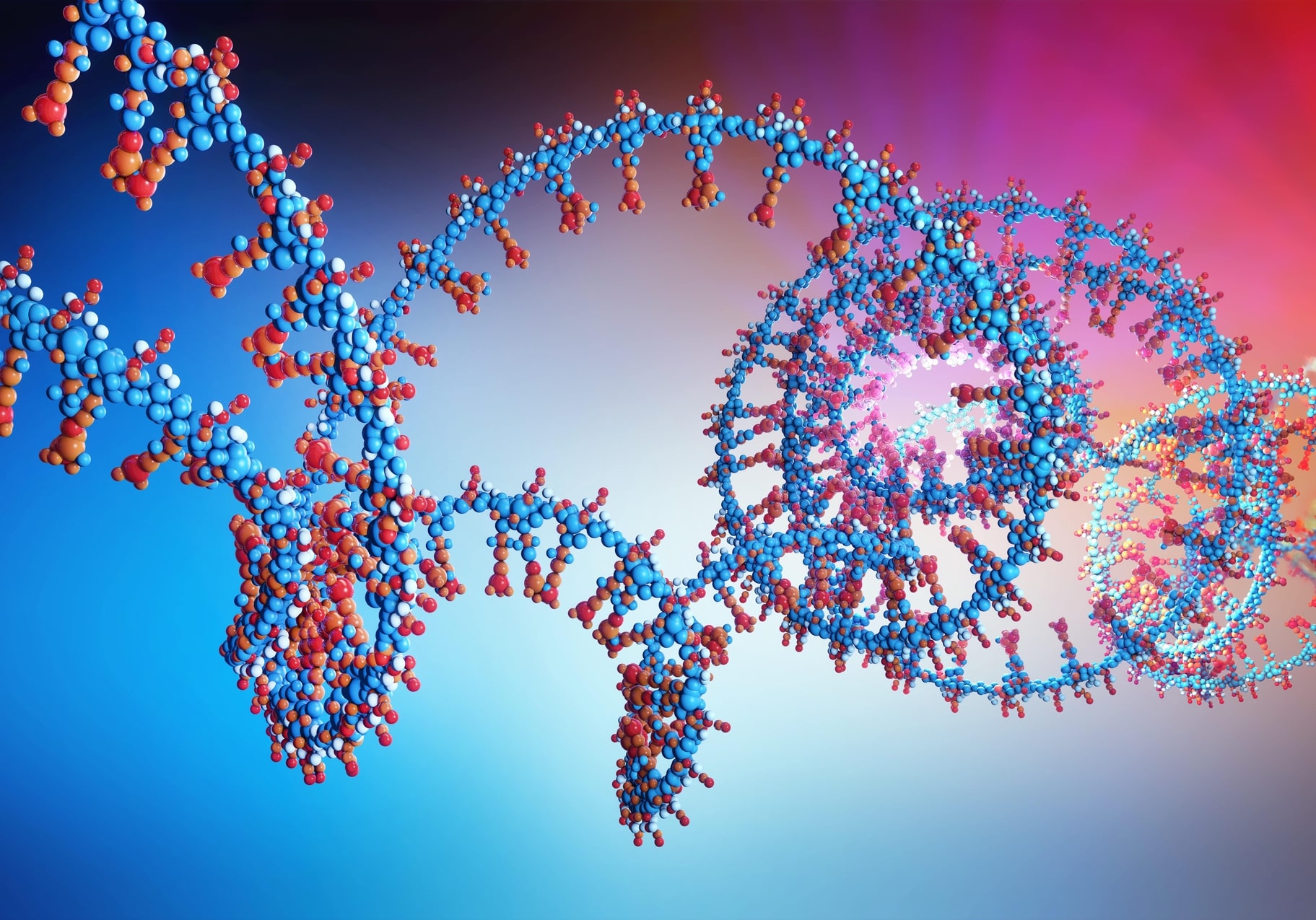
Systemic Enzymes – A Powerful Tool for Boosting Overall Health and Wellness
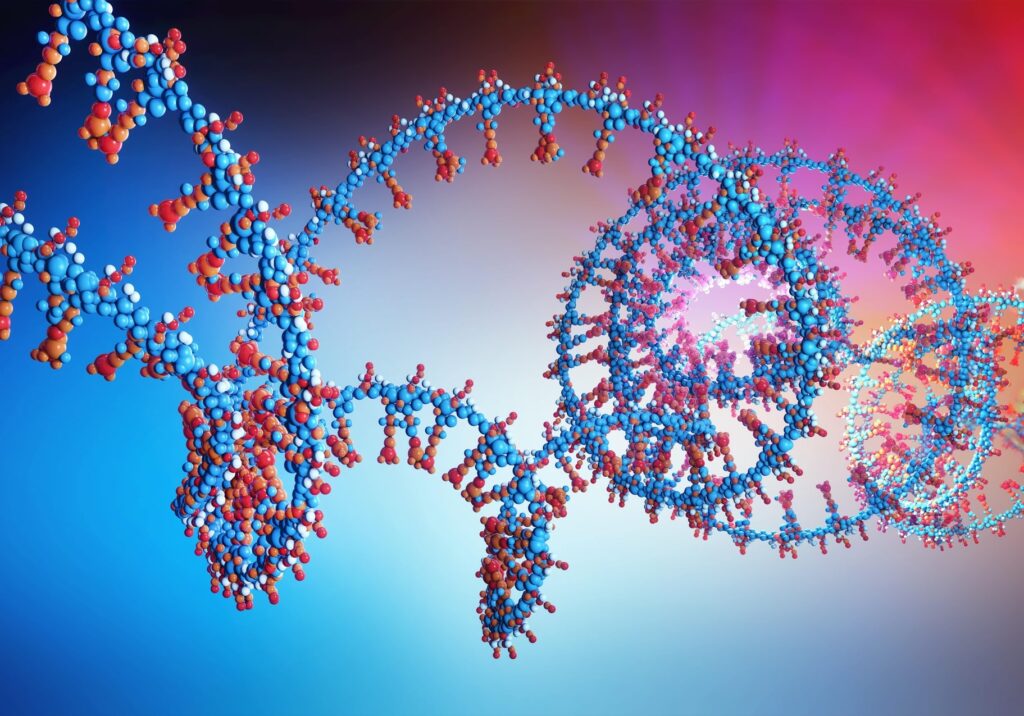

Systemic Enzymes – A Powerful Tool for Boosting Overall Health and Wellness
If you are looking for ways to manage inflammation, reduce tissue aging, and promote healthy wound healing, systemic enzymes may be a safe and powerful option. This article will explain how systemic enzymes work, along with the latest scientific evidence about their benefits.
What are enzymes?

Enzymes are proteins that are catalysts. That means they start and speed up biochemical reactions in our bodies. They are the bioworkers that make things happen and carry on numerous processes in our bodies that keep us alive.
Digestive vs. systemic enzymes
There are two types of enzyme supplements: digestive and systemic.
Digestive enzymes help us break down food in the gut into simple units that our bloodstream can absorb. Some digest carbohydrates, others proteins or fats. We naturally produce these enzymes, but many people experience improved digestion when supplementing with them. They may relieve symptoms of poor digestion, such as bloating, gas, and abdominal discomfort.
Systemic enzymes are plant-based protein-digesting enzymes. They can digest food in the gut as well as get absorbed into the bloodstream. In the bloodstream, systemic enzymes can help break down leftover proteins and debris from inflammatory processes. So, they can support a balanced inflammatory response and post-exercise recovery. By doing so, these enzymes support whole body healing and wellness.
Different types of systemic enzymes
Although systemic enzymes break down proteins, they can also break down non-protein substances such as toxins, mucus, and allergens. Here we discuss the most well-known systemic enzymes and their functions.
Serrapeptase
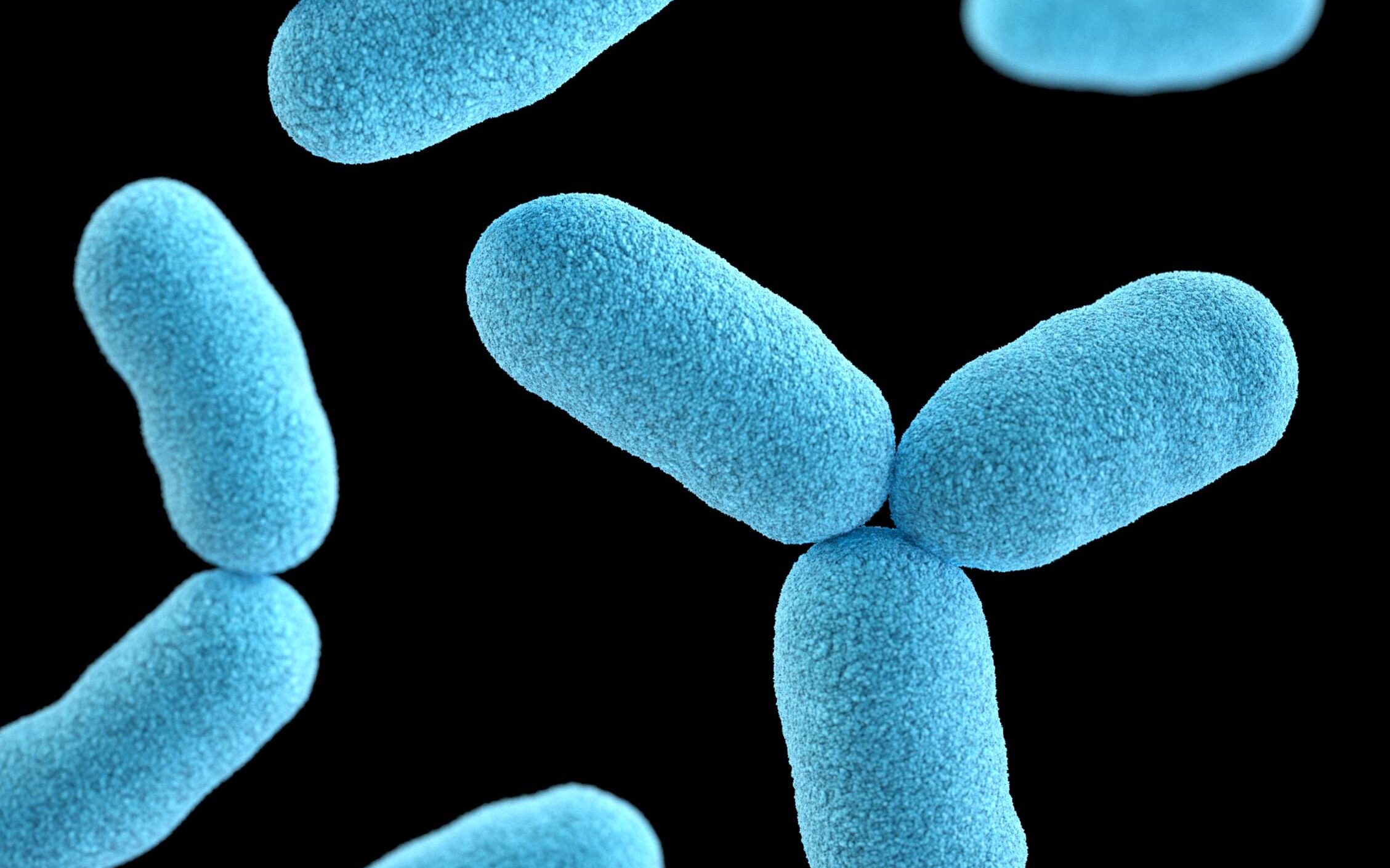
Chronic Inflammation that fails to resolve healthily can contribute to chronic pain, cardiovascular disease, aging, and many other modern chronic health problems. Systemic enzymes like serrapeptase can support the resolution of inflammation.
Serrapeptase or serratiopeptidase is an enzyme extracted from the bacteria Serratia found in silkworm intestines. It is one of the most effective systemic enzymes supporting a healthy inflammatory response, lung health, and post-exercise muscle recovery.
Serrapeptase thins the blood by breaking down fibrin, so it may help:
- Inhibit blood clots that contribute to arterial plaques
- Promote cardiovascular health
- Support healthy blood pressure levels
In one controlled clinical study, scientists evaluated serrapeptase’s effect in 193 patients suffering from the ear, nose, and throat acute inflammatory conditions. Both groups (placebo and serrapeptase treated) improved after a week. However, the serrapeptase group recovered faster (within 3-4 days). They experienced:
- Significant reduction in pain
- Reduction in amount and thickness of mucus
- Improvement in swallowing ability
- Reduced nose blockage
- The regained sense of smell
Therefore, the serrapeptase group promotes recovery from ear, nose, or throat infections compared to the placebo group,
In another clinical trial of patients with chronic lung disease, after four weeks of serrapeptase treatment, the group experienced decreased mucus and coughs. The serrapeptase group also had thinner mucus and less white blood cells in their mucus,
Serrapeptase limits biofilm formation and is a “biofilm buster” because it breaks down biofilms.
A biofilm is any group of microorganisms whose cells stick to one another and adhere to a specific surface, such as a wound. Biofilms are found in 80% of infections and make the bacteria harder to kill. They shield the bacteria from the immune system and antibiotics, so the bacteria have a safe space to thrive.
Serrapeptase enhances the efficacy of antibiotics against infectious bacteria such as Staphylococcus aureus. In animal studies, antibiotics with serrapeptase were more efficient than antibiotics alone, even against antibiotic-resistant bacteria.
Keep in mind, however, that the evidence for these uses in humans are quite limited and Serrapeptase is not FDA-approved to treat any medical conditions.
Nattokinase

Nattokinase is derived from natto, a Japanese delicacy made from boiled soybeans fermented with the Bacillus natto bacterium.
Research shows that the systemic enzyme nattokinase can:
- Promote blood thinning and dissolving blood clots
- Maintaining healthy blood vessel lining and structure
- Promote healthy cholesterol levels
- Normalize blood pressure
- May support healthy wound healing
- Promotes cardiovascular health
Nattokinase targets two proteins involved in blood clotting – fibrin and Factor VIII, One clinical study of young, healthy males demonstrated its blood-thinning effects.
A Chinese study examined the effects of nattokinase on patients with atherosclerosis. Thirty-nine of them took nattokinase, and thirty-seven took simvastatin, a conventional cholesterol drug. Nattokinase was over three times as effective at reducing plaque compared to simvastatin. Also, the nattokinase group had higher protective HDL cholesterol than the simvastatin group.
Pre-clinical studies suggest that nattokinase may help with memory issues through its fibrin-breakdown ability. However, clinical studies are needed to prove it’s effective in humans.
Nattokinase given by injection may also help improve blood flow to the brain after a stroke. In mice, three injections of nattokinase before inducing them with a stroke seemed to have mitigated the effects of the stroke. Their small brain vessels remained unblocked, preventing tissue damage. These results are promising but still need to be proven in humans.
Papain
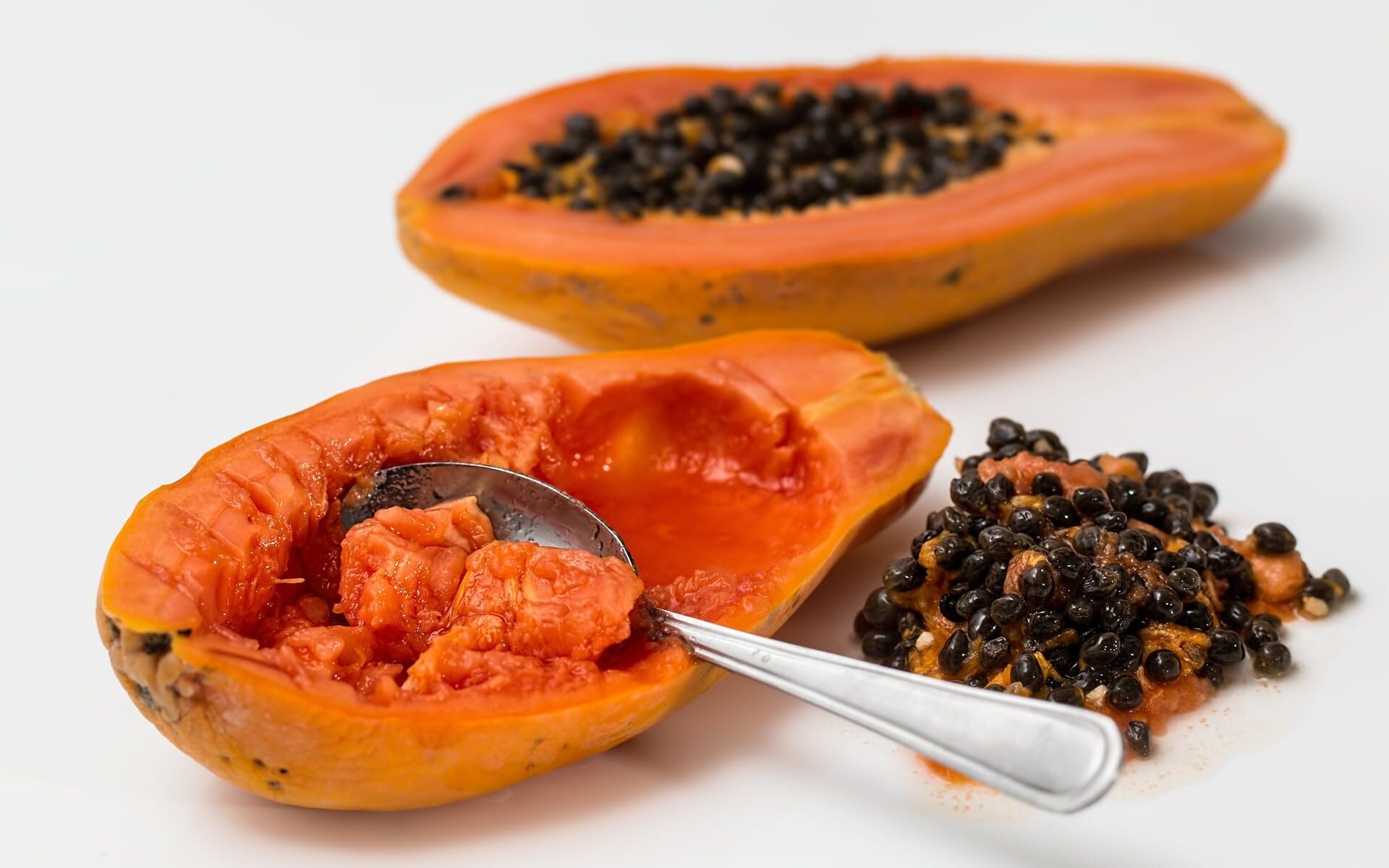
Papain is another systemic and protein-digesting enzyme extracted from papaya fruits. You can take it alone or in combination with other proteolytic and systemic enzymes.
Papain has traditionally been used to ease pain, inflammation, and swelling.
A recent clinical trial involved 100 patients with a sore throat due to pharyngitis or tonsillitis (inflammation and infections of the throat and tonsil, respectively). The patients took Frubienzyme, a mixture of 5 mg of lysozyme, 2 mg of papain, and 200 international units of the antibiotic bacitracin. After four days, they experienced a reduction in the following symptoms:
- Swelling
- Throat redness
- Coughing
- Pain on swallowing
- Throat mucus
The researchers concluded that papain might ease a sore throat when combined with these ingredients.
One clinical study showed that papain provided some relief and supported healing from shingles – a viral infection causing inflammation of specific nerves and a painful rash.
Crushed papaya seeds may kill intestinal parasites. Researchers also investigated the alleged bacteria-inhibiting properties of papaya pulp and seed. They discovered that it inhibits the growth of various types of bacteria in the test tube.
Papain may also aid digestion and ease digestive disorders. In many countries, people use it to promote digestive regularity and healthy gut flora in many countries. Clinical studies found that it supports healthy digestion by helping with constipation, bloating, and heartburn.
In a controlled clinical study, patients with digestive issues took 20 ml of papain for 40 days. They experienced an improvement in constipation, bloating, IBS, and heartburn.
Topical papain may support healthy wound healing and ease symptoms of skin ulcers and other skin conditions. Researchers produced a papain-based wound cleanser to simplify wound management. They conducted a study with 27 healthy rats with wounds. The rats were divided into three groups. One group’s wounds were treated with distilled water, the second with Betadine, and the third with the papain cleanser. The papain-treated rats’ wounds healed better than those of the other two groups.
Also, a systematic review concluded that papain is both practical and safe for healthy wound healing. However, because most research was in animals, we need additional clinical studies to confirm its safety and effectiveness in humans. Also, systemic enzymes like papain are not approved to treat any diseases.
Bromelain
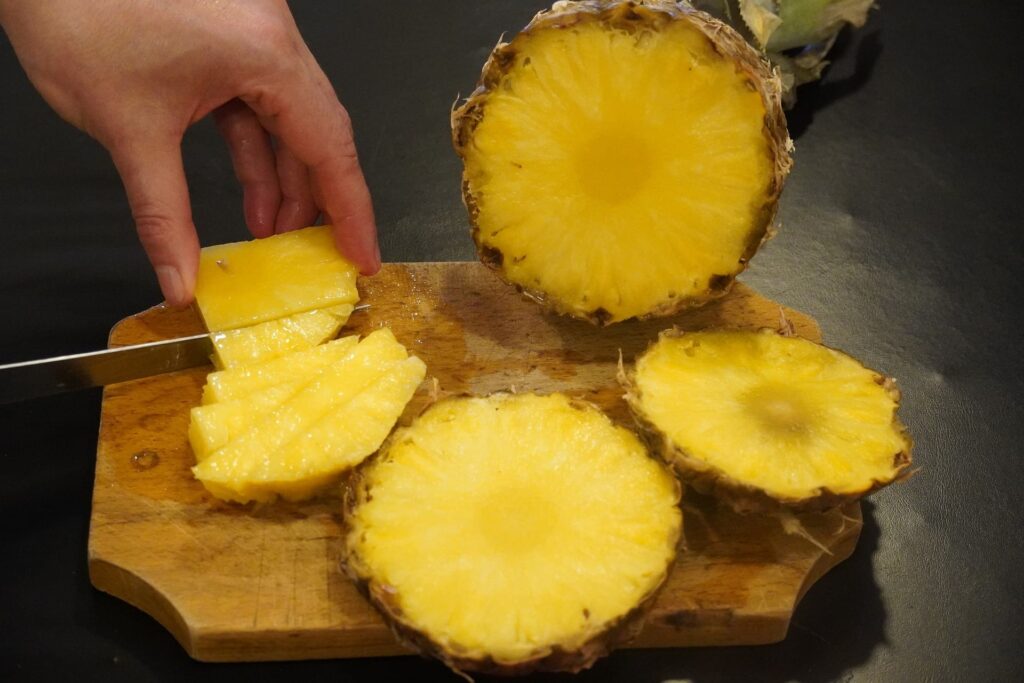
Bromelain is a mixture of proteolytic enzymes derived from pineapple stems and fruit. People have been consuming pineapples for a long time to ease the symptoms of swelling, muscle soreness, and burns.
An in-depth review of clinical studies suggested that bromelain supports joint health and relieve stiffness. However, the studies differed in bromelain dosage information and recommendations, so further studies are needed to decide on the best doses for long-term usage
Bromelain also thins the blood and prevents excessive blood clotting, thereby supporting cardiovascular and lung health.
Systemic enzymes and exercise recovery

Systemic enzymes may also ease muscle soreness caused by intense exercise. By doing so, the enzymes help the exerciser return to optimal performance sooner. However, to date, there has been no study that evaluates whether they support or inhibit muscle growth.
Bodybuilding works by creating small damages in muscle cells that cause muscles to grow (hypertrophy). To grow the muscles, you’ll need some inflammation, which is why soreness is part of bodybuilding.
Many anti-inflammatory options, such as NSAID painkillers and cold exposure, can help with soreness but also inhibit muscle growth.
Consuming systemic enzymes or enzyme-rich plants may speed up recovery by supporting healthy resolution of the inflammatory response.
In a clinical study, ten men received placebos, and ten received bromelain and papain supplements. The men then ran downhill for 30 minutes. The enzyme group had less muscle soreness and recovered better than the placebo group. Therefore, enzyme supplements may facilitate muscle healing and boost muscle restoration after exercise.
In another study, participants received systemic enzyme supplements, while the control group received no treatment. The supplemented participants experienced less muscle pain and tenderness after exercising than the control group. Also, the supplemented group’s muscle performance returned to normal quicker.
In another clinical trial, participants performed eccentric resistance training to exhaustion. One group received systemic enzyme supplements before and after exhaustive exercising, while the other had none. The supplement group had less muscle pain and fatigue than the control group.
Systemic enzymes and weight loss
There are a few ways systemic enzymes may support weight loss and maintenance efforts along with a healthy diet and lifestyle.
Obesity can be a sign of inflammation. Conversely, fat tissues, especially around internal organs (visceral fats), produce inflammation. Resolving inflammation can help break this vicious inflammation-fat gain cycle.
Bromelain inhibits the increase in the number of fat cells. It also supports the breakdown of fats and other lipids and induces the death of adipocytes.
In a mouse study, papain supplements reduced body weight, body fat, triglycerides, and cholesterol, along with fat accumulation in the liver. These were obese mice who were fed with a high-fat diet.
Obese people tend to have elevated clotting factors leading to depleted oxygen levels in body fat, which impairs insulin signaling and may contribute to diabetes. Nattokinase has proven fibrinolytic activity. Therefore, it may help decrease clot size and fat distribution.
Keep in mind, however, that there is still very limited clinical evidence to support the use of systemic enzymes for weight loss.
Summary: systemic enzymes’ health benefits
- Digesting foods
- Promotes a balanced inflammatory response and healthy resolution of inflammation
- Wound and injury healing
- Exercise recovery
- Joint health
- Immune system modulating and infection-fighting by breaking biofilms
- Respiratory system health, especially by reducing mucus
- Cardiovascular health
Sources of systemic enzymes
Our bodies produce many important enzymes on their own, but our enzyme production decreases with age. This enzyme deficiency may contribute to the symptoms of aging and poor health.
Dr. Edward Howell believes that we have an “enzyme bank account,” which declines as we age. Depleting our enzyme bank account, such as eating a low-enzyme diet, can contribute to poor health and diseases.
Fortunately, many raw and fermented foods are rich in enzymes. Some can aid digestion, while others may be absorbed into the bloodstream and deliver systemic benefits.
Dietary sources of enzyme-rich foods
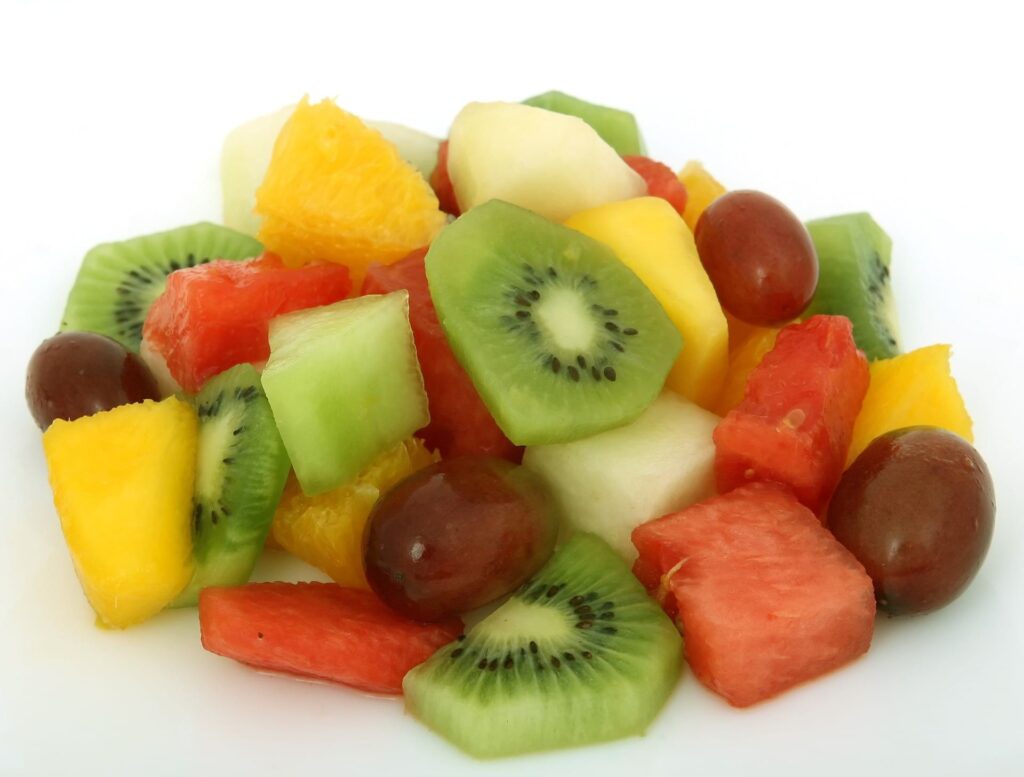
Many plant-based foods are rich in enzymes. Therefore, following a diet rich in raw fruits and vegetables is a healthy way of consuming an enzyme-rich diet.
We have explained the importance of both digestive and systemic enzymes. Therefore, you should try to consume natural food sources of enzymes to boost your digestion and other bodily functions. Foods rich in digestive enzymes include the following.
- Mangoes
- Honey
- Bananas
- Avocados
- Miso
- Pineapples
- Papayas
- Ginger
- Kefir
- Kiwis
- Asparagus
- Kimchi
- Sauerkraut
- Yogurt
You may also wish to boost your systemic enzyme intake by consuming supplements, particularly if you have health issues.
How to take systemic enzyme supplements
Bromelain and papain supplements often come in combination with pancreatin, trypsin, and chymotrypsin in digestive enzyme blends. However, systemic enzymes for whole-body healing tend to contain only plant-based enzymes. To maximize the systemic enzyme benefits, take them on an empty stomach.
Systemic enzymes’ potential side effects and drug interactions
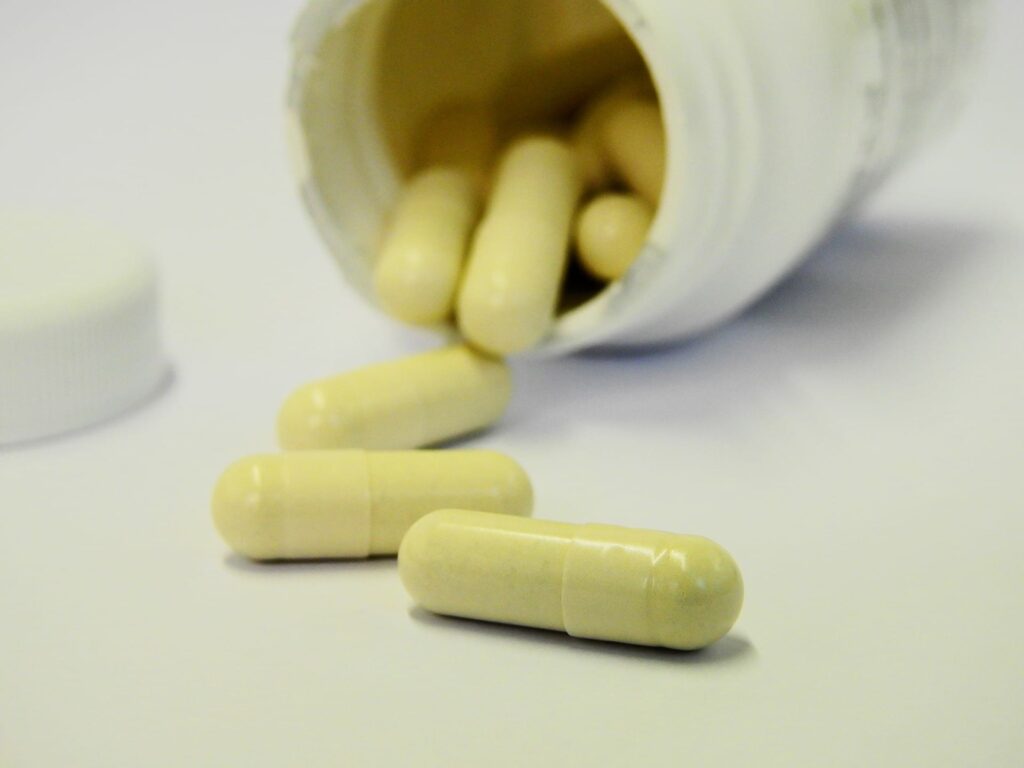
Systemic enzymes are natural, and their supplementation does not have any major known side effects. However, one should always consult a physician before starting any supplementation, especially if consuming other drugs.
Systemic enzymes may thin the blood and reduce blood clotting. Therefore, Medical professionals may advise the following groups of people to avoid systemic enzyme supplements:
- People with blood-clotting disorders such as hemophilia
- Patients on blood thinners such as warfarin
- Those with low blood pressure
- Those taking medicine for high blood pressure
- Patients scheduled for surgery should stop the enzymes two weeks before their procedure.
There is a lack of research on the long-term effects of systemic enzyme supplementation and its use in children or during pregnancy or breastfeeding.
Serrapeptase promotes immune system readiness when combined with many antibiotics to boost biofilm breakdown. However, you should always consult your healthcare provider before making any changes to your supplement or medication.
References
- Ianiro G, Pecere S, Giorgio V, Gasbarrini A, Cammarota G. Digestive enzyme supplementation in gastrointestinal diseases. Curr Drug Metab. 2016;17(2):187-193.
- Paradis M-E, Couture P, Gigleux I, Marin J, Vohl M-C, Lamarche B. Impact of systemic enzyme supplementation on low-grade inflammation in humans. PharmaNutrition. 2015;3(3):83-88.
- Marzin T, Lorkowski G, Reule C, et al. Effects of a systemic enzyme therapy in healthy active adults after exhaustive eccentric exercise: a randomised, two-stage, double-blinded, placebo-controlled trial. BMJ Open Sport Exerc Med. 2016;2(1):e000191.
- Meiser P, Xu Z, Kirsch G, Jacob C. Systemic enzyme therapy: Fact or fiction? A review with focus on bromelains, proteolytic enzymes from the pineapple plant. In: Recent Advances in Redox Active Plant and Microbial Products. Springer Netherlands; 2014:449-467.
- Tiwari M. The role of serratiopeptidase in the resolution of inflammation. Asian J Pharm Sci. 2017;12(3):209-215.
- Bhagat S, Agarwal M, Roy V. Serratiopeptidase: a systematic review of the existing evidence. Int J Surg. 2013;11(3):209-217.
- Al-Khateeb TH, Nusair Y. Effect of the proteolytic enzyme serrapeptase on swelling, pain and trismus after surgical extraction of mandibular third molars. Int J Oral Maxillofac Surg. 2008;37(3):264-268.
- Burney P, Jarvis D, Perez-Padilla R. The global burden of chronic respiratory disease in adults. Int J Tuberc Lung Dis. 2015;19(1):10-20.
- Mazzone A, Catalani M, Costanzo M, et al. Evaluation of Serratia peptidase in acute or chronic inflammation of otorhinolaryngology pathology: a multicentre, double-blind, randomized trial versus placebo. J Int Med Res. 1990;18(5):379-388.
- Nakamura S, Hashimoto Y, Mikami M, et al. Effect of the proteolytic enzyme serrapeptase in patients with chronic airway disease. Respirology. 2003;8(3):316-320.
- Römling U, Balsalobre C. Biofilm infections, their resilience to therapy and innovative treatment strategies. J Intern Med. 2012;272(6):541-561.
- Selan L, Papa R, Tilotta M, et al. Serratiopeptidase: a well-known metalloprotease with a new non-proteolytic activity against S. aureus biofilm. BMC Microbiol. 2015;15(1):207.
- Hogan S, Zapotoczna M, Stevens NT, Humphreys H, O’Gara JP, O’Neill E. Potential use of targeted enzymatic agents in the treatment of Staphylococcus aureus biofilm-related infections. J Hosp Infect. 2017;96(2):177-182.
- Gupta PV, Nirwane AM, Belubbi T, Nagarsenker MS. Pulmonary delivery of synergistic combination of fluoroquinolone antibiotic complemented with proteolytic enzyme: A novel antimicrobial and antibiofilm strategy. Nanomedicine. 2017;13(7):2371-2384.
- Selan L, Papa R, Ermocida A, et al. Serratiopeptidase reduces the invasion of osteoblasts by Staphylococcus aureus. Int J Immunopathol Pharmacol. 2017;30(4):423-428.
- Cardiovascular diseases. Who.int. Accessed September 14, 2021. https://www.who.int/health-topics/cardiovascular-diseases.
- Zhang B, Liu Y, Ji Q, et al. Nattokinase crude extract enhances cutaneous wound healing. J Biomater Tissue Eng. 2017;7(12):1281-1286.
- Chen H, McGowan EM, Ren N, et al. Nattokinase: A promising alternative in prevention and treatment of cardiovascular diseases. Biomark Insights. 2018;13:1177271918785130.
- Kurosawa Y, Nirengi S, Homma T, et al. A single-dose of oral nattokinase potentiates thrombolysis and anti-coagulation profiles. Sci Rep. 2015;5(1):11601.
- Ren NN, Chen HJ, Li Y, Mcgowan GW, Lin YG. A clinical study on the effect of nattokinase on carotid artery atherosclerosis and hyperlipidaemia. Zhonghua Yi Xue Za Zhi. 2017;97(26):2038-2042.
- Fadl NN, Ahmed HH, Booles HF, Sayed AH. Serrapeptase and nattokinase intervention for relieving Alzheimer’s disease pathophysiology in rat model. Hum Exp Toxicol. 2013;32(7):721-735.
- American Chemical Society. Soybean product fights abnormal protein involved in Alzheimer’s disease. Science Daily. Published online February 20, 2009. Accessed September 14, 2021. Soybean Product Fights Abnormal Protein Involved In Alzheimer’s Disease
- Ahn Y-J, Kim MH, Kim J, et al. Abstract W P262: Neuroprotective effect of nattokinase mediated by inhibition of platelet aggregation and thrombosis in photothrombotic stroke. Stroke. 2015;46(suppl_1):AWP262-AWP262.
- Controlling Inflammation with Proteolytic Enzymes. Nutritionreview.org. Published April 24, 2013. Accessed September 14, 2021. https://nutritionreview.org/2013/04/controlling-inflammation-proteolytic-enzymes/
- Raus I. Clinical studies on Frubienzyme in a controlled double-blind trial. Fortschr Med. 1976;94(28):1579-1582.
- Billigmann P. Enzyme therapy–an alternative in treatment of herpes zoster. A controlled study of 192 patients. Fortschr Med. 1995;113(4):43-48.
- Okeniyi JAO, Ogunlesi TA, Oyelami OA, Adeyemi LA. Effectiveness of dried Carica papaya seeds against human intestinal parasitosis: a pilot study. J Med Food. 2007;10(1):194-196.
- Osato JA, Santiago LA, Remo GM, Cuadra MS, Mori A. Antimicrobial and antioxidant activities of unripe papaya. Life Sci. 1993;53(17):1383-1389.
- Stepek G, Lowe AE, Buttle DJ, Duce IR, Behnke JM. Anthelmintic action of plant cysteine proteinases against the rodent stomach nematode, Protospirula muricola, in vitro and in vivo. Parasitology. 2007;134(Pt 1):103-112.
- Muss C, Mosgoeller W, Endler T. Papaya preparation (Caricol®) in digestive disorders. Neuro Endocrinol Lett. 2013;34(1):38-46.
- Ajlia SASH, Majid FAA, Suvik A, Effendy MAW, Nouri HS. Efficacy of papain-based wound cleanser in promoting wound regeneration. Pak J Biol Sci. 2010;13(12):596-603.
- Leite AP, de Oliveira BGRB, Soares MF, Barrocas DLR. Use and effectiveness of papain in the wound healing process: a systematic review. Rev Gaucha Enferm. 2012;33(3):198-207.
- Maurer HR. Bromelain: biochemistry, pharmacology and medical use. Cell Mol Life Sci. 2001;58(9):1234-1245.
- Brien S, Lewith G, Walker A, Hicks SM, Middleton D. Bromelain as a treatment for osteoarthritis: A review of clinical studies. Evid Based Complement Alternat Med. 2004;1(3):251-257.
- Pavan R, Jain S, Shraddha, Kumar A. Properties and therapeutic application of bromelain: a review. Biotechnol Res Int. 2012;2012:976203.
- Büttner L, Achilles N, Böhm M, Shah-Hosseini K, Mösges R. Efficacy and tolerability of bromelain in patients with chronic rhinosinusitis–a pilot study. B-ENT. 2013;9(3):217-225.
- Secor ER Jr, Carson WF 4th, Cloutier MM, et al. Bromelain exerts anti-inflammatory effects in an ovalbumin-induced murine model of allergic airway disease. Cell Immunol. 2005;237(1):68-75.
- Schoenfeld BJ. The mechanisms of muscle hypertrophy and their application to resistance training. J Strength Cond Res. 2010;24(10):2857-2872.
- Miller PC, Bailey SP, Barnes ME, Derr SJ, Hall EE. The effects of protease supplementation on skeletal muscle function and DOMS following downhill running. J Sports Sci. 2004;22(4):365-372.
- Udani JK, Singh BB, Singh VJ, Sandoval E. BounceBack capsules for reduction of DOMS after eccentric exercise: a randomized, double-blind, placebo-controlled, crossover pilot study. J Int Soc Sports Nutr. 2009;6(1):14.
- Ellulu MS, Patimah I, Khaza’ai H, Rahmat A, Abed Y. Obesity and inflammation: the linking mechanism and the complications. Arch Med Sci. 2017;13(4):851-863.
- Mechanisms of obesity-induced inflammation and insulin resistance: insights into the emerging role of nutritional strategies. Front Endocrinol (Lausanne). 2013;4:52.
- Dave S, Kaur NJ, Nanduri R, Dkhar HK, Kumar A, Gupta P. Inhibition of adipogenesis and induction of apoptosis and lipolysis by stem bromelain in 3T3-L1 adipocytes. PLoS One. 2012;7(1):e30831.
- Kang Y-M, Kang H-A, Cominguez DC, Kim S-H, An H-J. Papain ameliorates lipid accumulation and inflammation in high-fat diet-induced obesity mice and 3T3-L1 adipocytes via AMPK activation. Int J Mol Sci. 2021;22(18):9885.
- Cobos LM, Torre YS-DL, Herbst KL, Beltran K. SAT-618 Nattokinase to improve insulin sensitivity and weight loss in women with obesity +/- diabetes. J Endocr Soc. 2020;4(Supplement_1). doi:10.1210/jendso/bvaa046.145
- Ha M, Bekhit AE-D, Carne A, Hopkins DL. Characterisation of kiwifruit and asparagus enzyme extracts, and their activities toward meat proteins. Food Chem. 2013;136(2):989-998.
- Su H-P, Huang M-J, Wang H-T. Characterization of ginger proteases and their potential as a rennin replacement. J Sci Food Agric. 2009;89(7):1178-1185.
- Tamang JP, Shin D-H, Jung S-J, Chae S-W. Functional properties of microorganisms in fermented foods. Front Microbiol. 2016;7:578.
- Sannino G, Gigola P, Puttini M, Pera F, Passariello C. Combination therapy including serratiopeptidase improves outcomes of mechanical-antibiotic treatment of periimplantitis. Int J Immunopathol Pharmacol. 2013;26(3):825-831.
